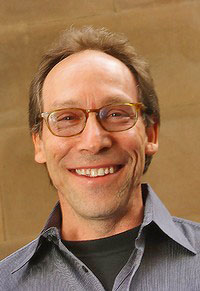Biographical Log of Michael Furstner - Page 282
11 | 12 ||
2012 :
Jan |
Feb |
Mar |
Apr |
May |
Jun |
Jul |
Aug |
Sep |
Oct |
Nov |
Dec || Page :
Previous |
Next
Martinshof Story -
Happiness -
Awareness -
Black Forest walks -
Camino -
Dolmen Tour -
Travel
Most Recent -
Next -
Previous -
Page 1 -
Photos -
Maps & Articles -
MP3s -
Jazclass
Tuesday - Saturday, May 21 - 25 2013
(diary)
 I am always most interested in the latest findings and progress in the fields of modern physics and cosmology. I go through Brian Greene's book The Fabric of the Cosmos (2004) at regular intervals but have not read anything more up to date than that.
I am always most interested in the latest findings and progress in the fields of modern physics and cosmology. I go through Brian Greene's book The Fabric of the Cosmos (2004) at regular intervals but have not read anything more up to date than that.
Recently Greene was on TV with a documentary about space-time presenting strong arguments for the existence of a multiverse of which our universe is only a tiny part of. However for a universe to develop similar to ours certain critical physical factors need to be just right, so that most potential parallel universes do not come to fruition (at least that is how I understood it from the documentary).
By chance I tuned in this week on a radio interview of Lawrence Krauss, a well known cosmologist visiting us in Australia at present. His latest book, "A Universe from Nothing" (2012) instantly became a bestseller in the USA and from what I heard during the interview it certainly wets my appetite. I immediately rushed online and purchased a copy (from the UK) which I hope to receive sometime in June.
If I understood the interview correctly : dark matter cancels out all matter in our universe and likewise energy is canceled out by dark energy, so that our Universe originally could have sprouted from absolutely nothing. This logic appeals to me very much, and I look foreward reading more about it in the near future.
Most Recent -
Next -
Previous -
Page 1 -
Photos -
Maps & Articles -
MP3s -
Jazclass
Sunday - Friday, May 26 - 31 2013
(diary)
 The Foreword in Makepiece Thackeray's novel Vanity Fair states that this is
arguably British' greatest piece of literature in History,
and perhaps the closest to Leo Tolstoy's War and Peace.
The Foreword in Makepiece Thackeray's novel Vanity Fair states that this is
arguably British' greatest piece of literature in History,
and perhaps the closest to Leo Tolstoy's War and Peace.
This prompted me to revisit Tolstoy's famous novel I had
read perhaps 20 years ago.
The work is far too lengthy
to borrow from the library so I went and bought the recent
Penguin edition newly translated (in 2005) in contemporary
English by Anthony Briggs.
Briggs did a fantastic
job, bringing this famous novel to life like never before.
It is an absolute delight to read.
So how do these two famous pieces of literature compare ?
They both cover approximately the same Napoleonic era
between 1800 and 1820, and Vanity Fair too pictures some of
the day to day reactions and experiences of the story's main
characters. But that is were the similarity
ends.
Vanity Fair is a great novel, but that word
simply does not adequately describes Tolstoy's work. War
and Peace is a multi-dimensional experience, no
doubt about it. It beats everything I have read throughout
my entire life. This is a very subjective statement of
course, but I believe that many discerning readers of this
work will have a similar experience and opinion.
Tolstoy had an interest in history, well before his career as a novelist. But he became frustrated with history writing because of its dryness, it seemed to reduce the richness in life.
Quoting Orlanda Figes in the novel's Afterword :
Tolstoy believed that whereas ....the real history of lived experiences was made up of an infinite number of factors and contingencies, historians selected just a few to develop their theories and explanations.
Tolstoy concluded that the histories of his day represented "perhaps only 0.001% of the elements which actually constitute the real history of people".
This is what Tolstoy strived to achieve in War and Peace, where he juxtaposes the immediate human experiences of the main characters in the novel with the historical memory (and written records) of them.
|
Although these days modern historians (in their books and documentaries) tend to include more personal aspects of some of the main players involved in historical events, (in my opinion) they still fall well short of Tolstoy's proposition.
I only have to recollect my own personal experiences as a young boy, when I lived through the time during and shortly after World War 2 to concur with Tolstoy's view.
Besides this central idea of Tolstoy, War and Peace contains a multitude of other ideas and aspects : of life in Russia, of the Russian people and their customs, as well as attitudes, fashions and the psychology and mind sets of many characters that populate the novel.
The new Penguin edition also includes several maps which brings the locations mentioned in the novel into a better perspective.
Comments -
Most Recent -
Next Page -
Previous -
Top -
Page 1 -
Photos -
Maps & Articles -
MP3s -
Jazclass
© 2013 Michael Furstner

